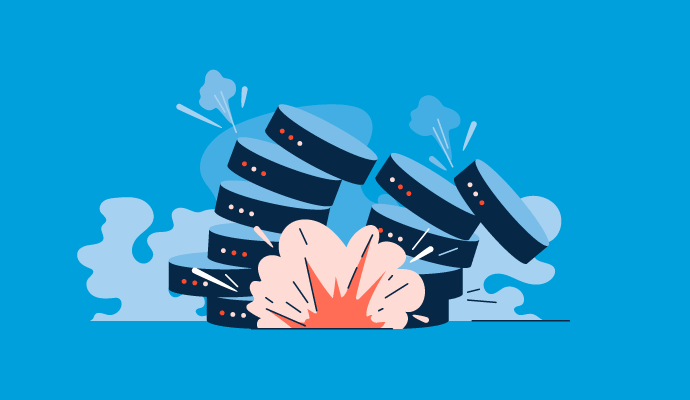How to Integrate Data Destruction Techniques right into Your Cyber Security Strategy
How to Integrate Data Destruction Techniques right into Your Cyber Security Strategy
Blog Article
Checking Out the Value of Data Devastation in the Context of Computer Safety Providers and Protecting Confidential Data
In a period where data breaches are increasingly usual, the value of efficient data devastation can not be overstated. What techniques can companies execute to enhance their data devastation protocols?
Recognizing Data Destruction
Data destruction is an important part of computer system safety that involves the permanent removal of information from storage space devices to avoid unapproved access and potential data breaches. In an increasingly digital landscape, companies face increased risks linked with sensitive details being improperly accessed or exploited. Efficient data devastation safeguards versus these threats, making sure that personal dataâEUR" such as consumer information, intellectual residential property, and economic recordsâEUR" can not be recouped after disposal.
Recognizing the importance of data damage expands beyond mere compliance with legal and regulatory structures; it is necessary for preserving organizational honesty and count on. When information is poorly managed or improperly destroyed, the effects can be severe, including financial loss, reputational damage, and lawful responsibilities.

Methods of Information Obliteration

One widespread technique is information cleaning, which entails overwriting existing information with random patterns numerous times. This technique renders the original information irretrievable, making it a popular selection for organizations looking for to protect personal details.
One more technique is degaussing, which utilizes an effective magnetic area to interrupt the magnetic domain names on storage gadgets, properly eliminating the data. This approach is specifically efficient for magnetic media yet is not appropriate to solid-state drives.
Physical destruction is an additional durable method, squashing or including the shredding of storage gadgets. This method assurances that data recovery is essentially difficult, making it excellent for very delicate information.
Lastly, encryption can work as a complementary method to data eradication. By encrypting information prior to removal, organizations can include an extra layer of security, guaranteeing that even if remnants are recuperated, they remain unattainable without the decryption secret. Each method should be chosen based upon the degree of data sensitivity and the particular safety and security needs of the organization.
Legal Conformity and Information Safety
Organizations must navigate a complex landscape of lawful requirements connected to data protection, especially after implementing approaches of information obliteration. Numerous regulations, such as the General Information Protection Law (GDPR) and the Medical Insurance Portability and Accountability Act (HIPAA), impose stringent standards on how organizations have to dispose and take care of of delicate information. Failure to conform with these laws can cause substantial lawful consequences, including considerable fines and reputational damage.
Information destruction processes have to be diligently documented to demonstrate conformity with applicable regulations and criteria. This documentation not just acts as evidence of adherence to lawful commitments yet additionally illustrates a dedication to safeguarding delicate information. Organizations ought to additionally establish clear plans relating to data retention and devastation timelines, guaranteeing that information is not held longer than needed.

Additionally, routine audits and evaluations of data devastation techniques are important to preserve conformity and adjust to evolving legal structures (data destruction). By proactively addressing legal needs, organizations can minimize risks connected with data violations and demonstrate their commitment to data safety. Inevitably, focusing on lawful compliance in data destruction processes is not just a regulative responsibility, yet a basic element of a robust information safety strategy
Effect On Organization Reputation
The track record of a business can be dramatically influenced by its approach to information devastation and administration. In today's electronic landscape, where information violations can occur anytime, the failure to effectively throw away delicate info can bring about extreme consequences. Organizations that inadequately handle data destruction danger revealing confidential customer info, which not just goes against privacy legislations however additionally erodes depend on amongst stakeholders and customers.
A damaged reputation can lead to lowered consumer commitment, as clients come to be reluctant to engage with a service that has demonstrated negligence in safeguarding their data. Unfavorable attention surrounding an information breach can have an enduring effect, as possible consumers could be discouraged by the viewed lack of security. This can bring about a direct decrease in earnings and market share.
In addition, organizations that prioritize information devastation as component of their safety method can improve their online reputation by showcasing their dedication to protecting sensitive info. By embracing strict information administration practices, organizations can not just alleviate threats but also place themselves as credible entities in their particular sectors, consequently enhancing their total brand picture.

Finest Practices for Secure Disposal
Carrying out best techniques for secure disposal of data is important for minimizing dangers connected with data violations and guaranteeing compliance with privacy policies. Organizations ought to take on a thorough data disposal plan that describes procedures for both digital and physical data devastation.
For physical data storage space gadgets, such as difficult drives, shredding or degaussing is advised to avoid data recovery. Additionally, companies ought to keep a chain of wardship documentation throughout the disposal procedure, making sure responsibility and traceability of disposed products.
For digital information, making use of software application that abides by market criteria look at this web-site for information wiping is critical. This software needs to overwrite existing data several times, making healing his comment is here essentially difficult. It is also crucial to confirm the efficiency of the information damage process via audits or third-party assessments.
Educating employees on safe and secure disposal methods includes an additional layer of safety, as human mistake can usually result in information exposure. Frequently upgrading and reviewing disposal policies makes certain positioning with advancing guidelines and technological innovations. By applying these best methods, companies can substantially lower the risk of unapproved data access and enhance their total data security method.
Final Thought
Finally, information devastation is a fundamental element of computer system protection services that ensures the security of secret information from unauthorized access. Implementing effective methods of data removal, sticking to legal conformity, and acknowledging the effect on company credibility are necessary parts of a comprehensive data security technique. By taking on best practices for secure disposal, organizations can promote count on with customers and secure sensitive data, inevitably adding to an extra safe and secure electronic landscape.
In a period where information violations are increasingly typical, the relevance of reliable information devastation can not be overstated.Data damage is an important element of computer system safety and security that involves the permanent elimination of data from storage space gadgets to protect against unapproved gain access to and potential information violations. Organizations must additionally develop clear plans regarding data retention and devastation timelines, making certain that data is not held longer than required.
By proactively dealing with legal needs, companies can reduce dangers linked with data violations and show their commitment to information safety and try this out security (data destruction). Eventually, focusing on legal conformity in data damage procedures is not just a governing commitment, yet an essential element of a durable information safety and security method
Report this page